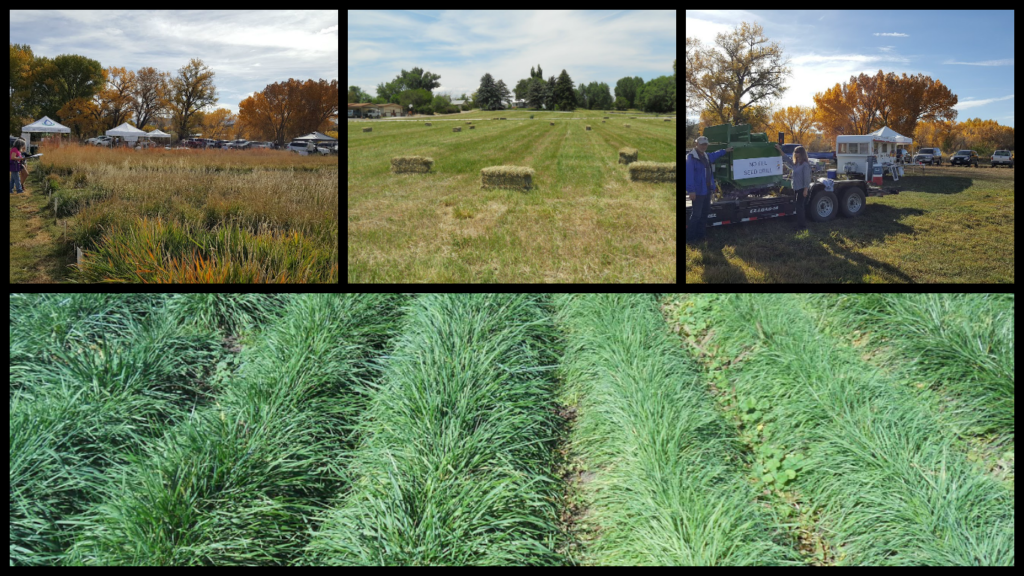The demonstration plot offers a hands-on view of 17 species of irrigated grasses and another 17 species of dryland grasses suited for the local area climate and soils. These grasses can be used for agricultural and natural resource conservation purposes, such as: growing hay, grazing livestock, weed suppression, erosion control, and enhancement of wildlife habitat. The grasses are planted on furrows clearly labeled. A plot map is posted and handout materials describing characteristics of each of the grasses are also available in a handout box. The handout gives information on: Growth Habit, Season of Use, Salt Tolerance, Seedling Vigor, Longevity, Recovery Rate, Flood or Wetness Tolerance, Drought Tolerance, Yield Potential, Winter Hardiness, Years Covered and other remarks.
The project is a cooperative effort by CSU Tri-River Area Extension, USDA Natural Resource Conservation Service, Delta County, Delta Conservation District, and the Colorado Association of Conservation Districts.
Landowners are encouraged to visit the “Pasture Management Self-Guided Tour”, at the Delta County Fairgrounds, 403 S. 4th Street, Hotchkiss, CO. The plot is located on the southeast corner of the fairgrounds, by the river.
Pasture Establishment & Renovation Guide
USDA Plant Guides:
Irrigated
- Orchard Grass
- Meadow Brome
- Smooth Brome
- Timothy
- Perennial Rye
- Intermediate Wheat
- Tall Wheat-grass
- Tall Fescue
- Western Wheat-grass

- Crested Wheat-grass
- Meadow Foxtail
- Switchgrass
- Big Bluestem
- Reed Canary Grass
Dryland



